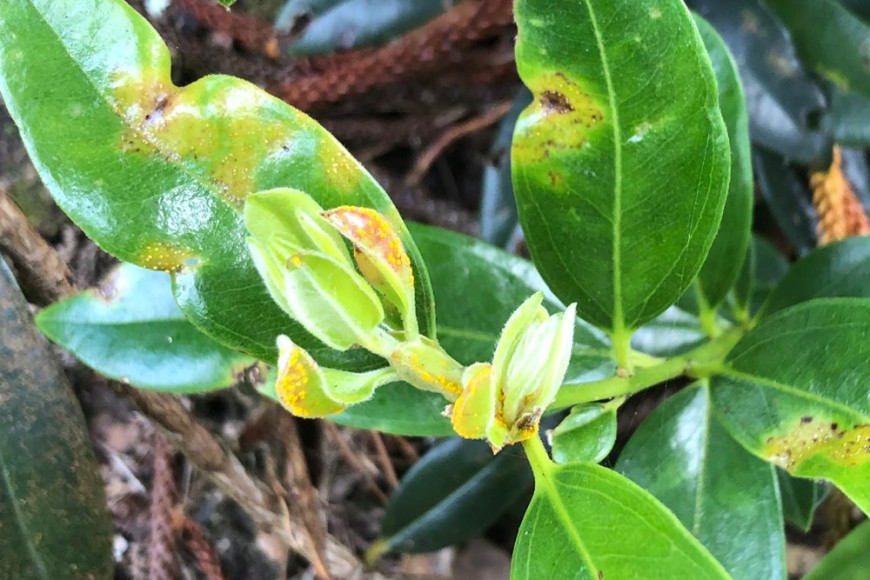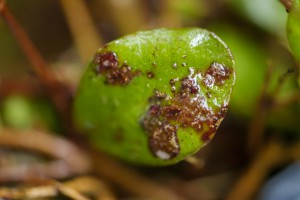
Myrtle rust on pōhutukawa
Myrtle rust, a disease caused by the fungal pathogen Austropuccinia psidii, affects plants in the myrtle (Myrtaceae) family, such as pōhutukawa, mānuka, and ramarama.
“Initially, our most susceptible plants were ramarama and rōhutu,” says Dr Mahajabeen Padamsee, leader of Beyond Myrtle Rust since the research programme began in 2019. “Over the past two years, this list has grown to include swamp maire and pōhutukawa.”
In March 2023, the first survey of pōhutukawa infections in Tāmaki Makaurau was completed by University of Auckland students working with researchers at Manaaki Whenua – Landcare Research. It showed that some trees had particularly high levels of infection. It was also the first report of myrtle rust on Rangitoto Island.
The survey was repeated and built upon during this last summer (2023/2024). Overall, infection intensity decreased in 80 of the 94 pōhutukawa trees revisited. Also, many plants that were previously disease-free remained so.
“This is a hopeful prospect for our pōhutukawa,” says Dr Padamsee.
The most likely contributor to lower levels of infection is the difference in climate between the past two summers.
“The warm, wet weather we had in January and February 2023 was ideal for myrtle rust,” says Dr Padamsee. “It makes sense that the cooler drier weather this past summer would correlate with lower levels of myrtle rust.”
But weather isn’t the only driver of infection. This year’s survey also found that pōhutukawa which were naturally established, in bloom, and closer to the coast correlated with lower infection rates.
While these observations are interesting to consider, Dr Padamsee highlights that it’s too early to call correlations a “trend” yet.
“We’ve only collected two years’ worth of data,” says Dr Padamsee. “Once we have three years of data, we can start talking about trends.”
The Beyond Myrtle Rust research programme comes to an end on June 30, but Dr Padamsee is hopeful that resources will be available to repeat the survey next year. “There is still much to learn about myrtle rust and why some pōhutukawa become more infected than others,” she says.
This year’s survey of pōhutukawa in Auckland was undertaken by undergraduate student Cecilia Beck, under the supervision of Associate Professor Bruce Burns (University of Auckland) and Dr Mahajabeen Padamsee (Manaaki Whenua – Landcare Research, Auckland).


